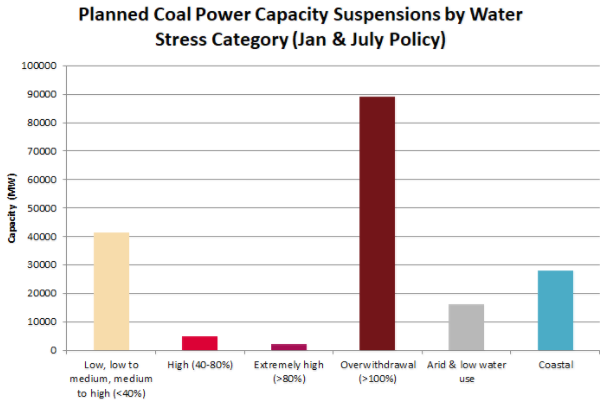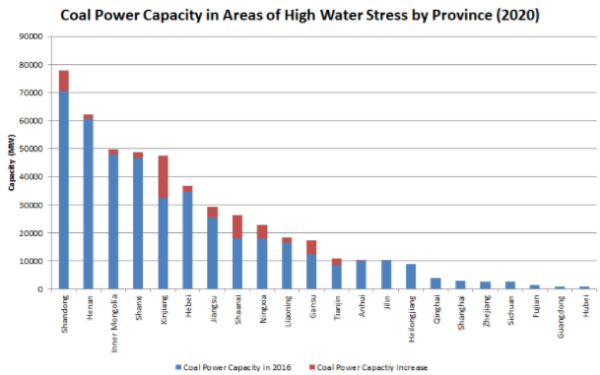Even after suspensions in new coal power capacity, China is on track to increase coal-fired power in some of its most water-stressed areas.

China has already announced two suspensions in new coal plants this year. Yet even after the changes go into effect, China is on track to increase coal-fired power capacity in some of its most water-stressed areas according to a new analysis from Greenpeace East Asia.
Proposed suspensions announced in January and July of this year would reduce the expansion of China’s large coal power fleet by 186 GW, and would suspend planned capacity in some of the country’s most water-stressed regions by 96 GW.
The suspensions would postpone or halt projects that are either under construction, approved or pending approval.
But coal power capacity in China’s most water-stressed areas is still on track to grow by 54 GW between 2016 and 2020, an increase that exceeds the size of Germany’s entire coal power fleet.
Moreover, in 2020, a total of 491 GW of capacity would still be located in China’s most water-stressed areas, researchers found. This amounts to more than ten times Russia’s total coal capacity.
Even with the suspensions in effect, China’s coal power fleet is projected to increase from 914 GW in 2016 to 1052 GW in 2020, meaning that the country’s overcapacity bubble in coal power will continue to expand.
The findings build on a report released by Greenpeace East Asia in July, before the second list of suspensions was announced, which found that eliminating redundant coal power capacity in areas of high water stress could free up enough water in these areas to meet the needs of 27 million people.


Potential water savings
Just over half of the proposed suspensions target areas of high water stress, where annual water withdrawal exceeds 40% of annual available water supply.
This includes plants that are expected to go into operation in areas of water over-withdrawal in Shanxi, Ningxia, Shandong and Xinjiang, provinces that are home to six out of nine of China’s massive coal power bases.
The proposed suspensions would halt construction and planning of 96 GW of coal-power capacity in areas categorized as high water stress and extremely high water stress, as well as in “over-withdrawal” areas, where water withdrawal exceeds renewable supply.
In some provinces, 100% of the proposed suspensions are located in areas that face the most extreme water stress. For example, in Ningxia, where per capita water resources amount to less than one 40th of the global average, 12 GW of capacity in over-withdrawal areas is listed for suspension.
Coal remains a threat
However, coal-fired capacity in areas of high water stress is still increasing.
In Shaanxi, for example, only 32% of planned suspensions are located in areas of high or extremely high water stress, and water over-withdrawal.
Shaanxi is home to the Kuye River Basin, where increasing coal-power capacity has worsened water scarcity.
The Kuye River is one of the main tributaries to China’s massive Yellow River, but since the 1990s, the river has seen extended dry periods and a fall in run-off — exacerbated by coal plants.


New coal plants still going into operation in China’s water-stressed areas
Li Danqing
Erin Newport